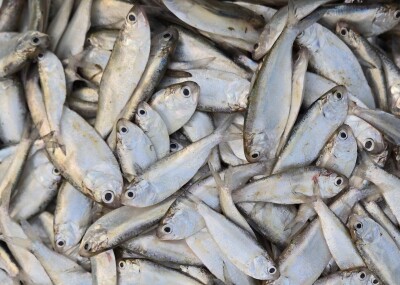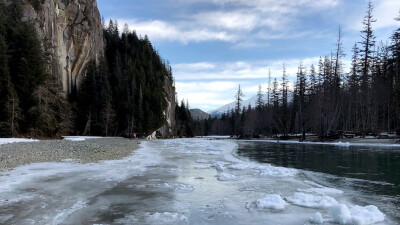ATY Northeast
Calif. comes to Canadian yard; from harpoon to rod and reel
Cory Guimond at Millennium Marine in Escuminac, New Brunswick, has probably sent more boats to the West Coast than any other boatbuilder in eastern Canada or Maine. At last count, he's put 10 boats on long-haul trucks for the drive across the states. Two of the boats have gone to Alaska.
The most recent to make the trip were two 45' x 16' boats that left Millennium Marine in the fall. The first one went in October to a Huntington Beach, Calif., fisherman who will use it as a light boat for squid fishing. The second left a month later and is now fishing Dungeness crab out of Eureka, Calif.
Developing a new market — especially one a continent away — is a lot easier once fishermen see what you are building. Guimond says the owner of the Dungeness crabber became aware of his boats when he saw a Millennium Marine 43-footer in San Francisco. That was the Pacific Rival, which went out as a Dungeness crabber in November 2010.
"They like the size and the style," Guimond says. "It's a big 45. It has a lot of freeboard, a lot more than hulls around here and more than most of the Down East boats, as well."
The light boat for squid fishing went out with a 610-hp Cummins QSM11. Guimond admits that the boat, hitting 15 to 16 knots, isn't as fast as others he's built, but then again she's carrying a lot of weight with a 20-foot light mast and twin 21-kW generators.
The Dungeness boat makes about the same speed with a 505-hp Isuzu, which Guimond describes as a "real workhorse of an engine." This boat is also packing a bunch of extra weight with a 50-kW generator and a 4-cylinder John Deere to run the boat's hydraulics.
"The boat was built especially heavy," Guimond says. "It's a heavier hull and heavier decks. He wanted extra 'glass everywhere."
With those boats out of the shop, the crew at Millennium Marine is building four 45-foot boats for Canadian fishermen. Two are kit boats that will be used for lobstering and herring fishing.
The third boat is for the lobster, snow crab and herring fisheries. This one will be completely assembled at Millennium Marine except for the systems, which the owner will install.
The last boat will be built completely at the Escuminac boatshop for a lobster and crab fisherman who is a return customer. "This boat is essentially the same as his old boat, but we reconfigured the cabin to give him more deck space and fish hold," Guimond says. The horsepower has also been increased from 400 to a new 825-hp Iveco.
Across the Maine border and down in South Harpswell, Mark Hubbard at Finestkind Boatyard is converting an older tuna boat from strictly harpooning to rod-and-reel fishing.
The Crowley 36 was built in 1992 for David Linney of Cape Neddick, Maine. Then about five years ago Finestkind Boatyard built Linney a custom one-off tuna boat designed by Spencer Lincoln of Brooklin, Maine.
Now Linney's original boat has been sold to Will Brune of Georgetown, Maine. "Down below is only a V-berth. We are putting in a head, shower, galley with a stove and microwave," says Hubbard.
The yard crew will have to add rod holders, along with a live-bait well back by the transom and probably a greenstick. (A greenstick tows an elevated mainline behind the boat from which squid lures hang that dip in and out of the water.) The yard will install a winch with the green stick.
The boat already has a refrigerated hold with a water spray system beneath the deck. "Trying to work things in around that has been kind of difficult," Hubbard says.
Brune would like a hydraulic pot hauler installed, but with the engine's pulleys already taken up with the chilling system, he may have to go with an electric hauler.
To make the 2013 tuna season, the boat has to be launched and ready to go by June 11.
Hubbard is also beginning the design phase of setting up a 42-footer as an offshore tuna boat for Georges Bank. — Michael Crowley
ATY West
Coastal crabber is still a winner; four oyster dredges getting jets
The late Seattle architect Lynn Senour's fiberglass coastal crabber from Maritime Fabrications is a proven design that keeps fishermen coming back for more.
Maritime Fabrications in La Conner, Wash., first built the Senour-designed hull 30-some years ago. Then in 1993 with a drop in demand for new boats, Maritime Fabrications stopped building the boat and didn't lay up another hull until last spring. Since then they've completed a 41- and 46-foot crabber and are now building another 41 for a Crescent City, Calif., crabber and a 49-footer for a Westport, Wash., crabber. When these boats are completed the yard has orders for two more crabbers.
"It's a sought-after design," says the boatyard's Isaac Oczkewicz. "It's a planing hull, but it has some shape to it that makes it good in sea condition. It's real efficient."
The 46-footer that was launched in December, the Miss Emilie, for Joe Speir of Brookings, Ore., hit 18 knots in a light condition and 13 knots when both holds were tanked down.
The basic hull is 41' x 15' 6". To add length, the crew at Maritime Fabrications put an extension in the middle, while beam is gained by cutting along each side of the keel to create a wedge shape that goes all the way to the bow. That gives the 41-footer a 17-foot beam, and the 49-footer is pushed out to 18 feet. Though Oczkewicz says, "from here on out they will be 18 feet in width, and the length will be what changes."
Both crabbers being built now will have a 650-hp Scania for propulsion. The 41-footer should be launched in February and the 49-foot crabber in the spring.
Maritime Fabrication is also building a 39' x 13' kit boat for a fisherman in Wrangell, Alaska. "We have two platforms we build on, and the 39 is the smaller one. It's a smaller version of the crab boat," Oczkewicz says.
Stewart Everest isn't slow to say that "things are exploding" when talking about the demand for his aluminum oyster dredges that Everest Marine & Equipment in Burlington, Wash., and Penn Cove Shellfish in Coupeville, Wash., are building for Coast Seafoods Co. in South Bend, Wash. His dredge design is another proven winner.
Everest is building four 64' x 18' x 18" oyster dredges. When these are completed, he will have sent 13 oyster dredges to Coast Seafoods. "It's that the design does so well. They can access more oysters on shallow grounds. Other boats are obsolete," he says. "It can dredge in a little over 2 feet. Other boats depend on 5 feet of water just to maneuver."
The dredges are powered by TraktorJets from NamJet hooked up to John Deere engines. All of the boats Everest has built for Coast Seafoods have TraktorJets. "As far as I know, I was the first to use them in this industry. It was a little battle at first convincing them to use the jets, but now it's happiness all around."
TraktorJets work well on the dredges because they are relatively slow-turning. "They handle sticks and other things from the tidal flats better than high-speed jets that plug easily. They are only operating at 900 rpm versus 3,000 and they don't cavitate," Everest says.
Everest recently completed a 58-foot scaled-down version of the 64-foot dredge for Coast Seafoods that went to California's Humboldt Bay. The Kumo Express has twin TraktorJets with 18-inch impellers matched up with 300-hp John Deere diesels.
The oyster dredge harvests oysters grown on longlines, and a hinged conveyor assembly that hangs over the bow brings the longline and oysters aboard. A 25-hp 10-inch bow thruster helps keep the Kumo Express lined up with the longlines.
One of the oyster dredges currently under construction has a single 425-hp John Deere with a 24-inch TraktorJet. All four dredges will have a conveyor running down the middle of the deck for unloading the oysters. On each side of the conveyor is a hinged 3/16-inch stainless steel deck with two hydraulic rams beneath it. When it's time to off-load the oysters, the rams push the decks up, dumping the oysters into the conveyor. — Michael Cr
owley
ATY South
Ala. yard building combo boat; buy boats still earn their keep
In mid-April, Jemison Marine & Shipbuilding of Bayou La Batre, Ala., will be launching a combination boat for Keith Laudeman of Cold Spring Fish & Supply Co. in Cape May, N.J. The 86' x 24' x 12' scalloper and dragger was designed by Travis Carver of Sterling Marine in Gulf Breeze, Fla.
The boat's main engine is a 600-hp Cummins QSK19-M, which will work through a Twin Disc gear with a 7:1 reduction turning a 5 1/2-inch shaft and a 73 1/4" x 74" prop in a nozzle. Also in the engine room are two John Deere 65-kW gensets. For maneuvering around the dock there's an 18-inch bow thruster.
A pair of Pullmaster trawl winches will be mounted above the shelter deck. This gives the warp lines a straight line aft to the gallows-mounted blocks, says Tim Jemison, of Jemison Marine & Shipbuilding. "We've got the main house on and are installing bulwarks right now," he said in early January.
Jemison Marine & Shipbuilding is located in the heart of the Gulf of Mexico's shrimp country, and thus is busy from January to April, hauling, maintaining and repairing shrimp boats. "We keep real busy during this time of the year as the captains want their boats hauled before the season starts May 1," says Jemison.
The yard finished repairing two shrimpers, has three boats hauled out and seven more to work on before May 1. "We are painting bottoms, doing shaft and wheel work and whatever else the boats may need," he says. "There is very little new construction in the shrimp business, but maintenance of the old boats helps keep things going. We are thankful for it."
Two graduates of the Landing School, a boatbuilding school in Arundel, Maine, are rebuilding a pair of classic Chesapeake Bay oyster buy boats at Gateway Marina and Ships Store in Trappe, Md.
Mike Amory and Andrew Abreu are working on the 61-foot Crow Brothers II and the 55-foot Georgie E. This is the third name the Crow Brothers II has carried. Julian was the first name, followed later by Callis Brothers. She was built in 1938 in Palmer on Virginia's Northern Neck and will be extensively rebuilt. Charles Wesley Abell owns the boat.
The Crow Brothers II, along with another buy boat, the Crow Brothers, which was originally named Nora W., a well known Virginia buy boat, laid derelict at a dock in Tilghman Island, Md. for many years. The Crow Brothers eventually was hauled out of the water and cut up.
"What saved the Crow Brothers II was that she had an aluminum deck installed on her for when she carried oysters," says Amory. "The aluminum deck didn't rot, and it kept fresh water off her. She is going to require a complete rebuild."
Amory and Abreu are working on the Georgie E., built by Alton Smith of Susan, Va., in 1944. They renailed the bottom, which took longer than expected, as fastenings wouldn't hold in the keel because so many had been driven into the wood.
Thus Amory and Abreu attached a "wing piece" onto the keel. It extends the rabbit out and allows them to drive new nails into solid wood. Also, the after end of the horn timber and a portion of the chunk round stern have been replaced.
They installed four white-oak strongbacks to stiffen the hull, and they're replacing all of the deck planking with new Atlantic white cedar.
The owner, Eyre Baldwin of Virginia's Eastern Shore, plans to use the boat for marine education classes and wants it Coast Guard certified to carry passengers.
"We are seeing more and more of these old boats being restored," says Amory. "They can be used for so many different things. Very important though is that the oyster fishery appears to be coming back. With that business coming back, boats like these are going to be needed and can work in that fishery." — Larry Chowning






